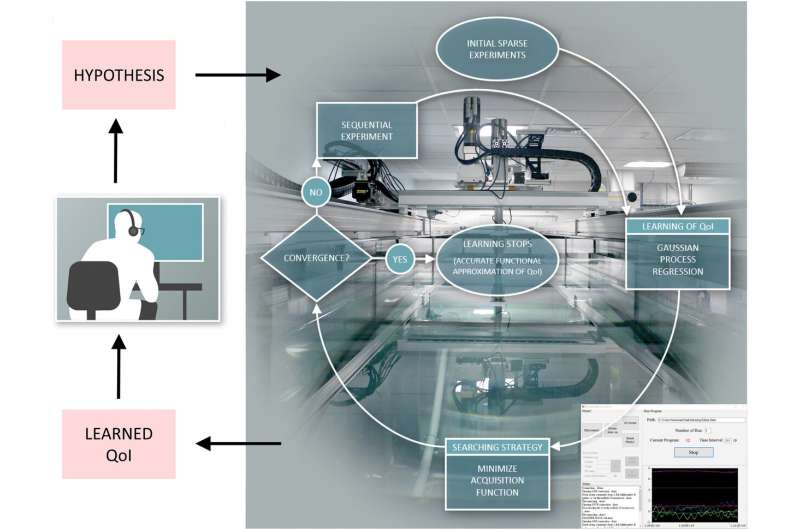December 5, 2019 report
Intelligent tow tank automatically carries out 100,000 experiments in just one year

A team of researchers working in a MIT lab has built an intelligent tow tank (ITT) that is capable of carrying out fluid dynamics experiments, and have used it to carry out 100,000 such experiments in just one year. In their paper published in the journal Science Robotics, the team describes the ITT, its capabilities and what it has been working on for the past year.
When engineers design ships, they want the resulting vehicle to move through the water as efficiently as possible. This involves applying fluid dynamics research. But as the experiments by the team at MIT demonstrate, there is still more to learn. One of the things shipbuilders have learned is that "vortex induced vibrations" must be modeled and observed. In practice, this has involved moving a model through water and noting the vibrations that occur, then using the data to change parameters repeatedly for improvement, a process that takes many man-hours.
In this new effort, the researchers report a way to mechanize the process by building a robot of sorts onto a tank of water. The result was the ITT, which is capable of taking measurements as it runs a model across a tank of water, analyzing the measurements and constructing and carrying out the next logical experiment. It does this repeatedly until it meets a desired threshold. The researchers report that it has been hard at work conducting such experiments for the past year, conceiving and carrying out approximately 100,000 experiments—essentially performing every two weeks as much work as a Ph.D. student would need to do to graduate. They claim that it has also done more "vortex induced vibration" experiments over the past year than humans have done in total.
The researchers suggest that the ITT represents a milestone in science experimentation—it shows that many experiments that require massive repetition can be done using robots, saving countless man-hours of work.

More information: D. Fan et al. A robotic Intelligent Towing Tank for learning complex fluid-structure dynamics, Science Robotics (2019). DOI: 10.1126/scirobotics.aay5063
© 2019 Science X Network


















